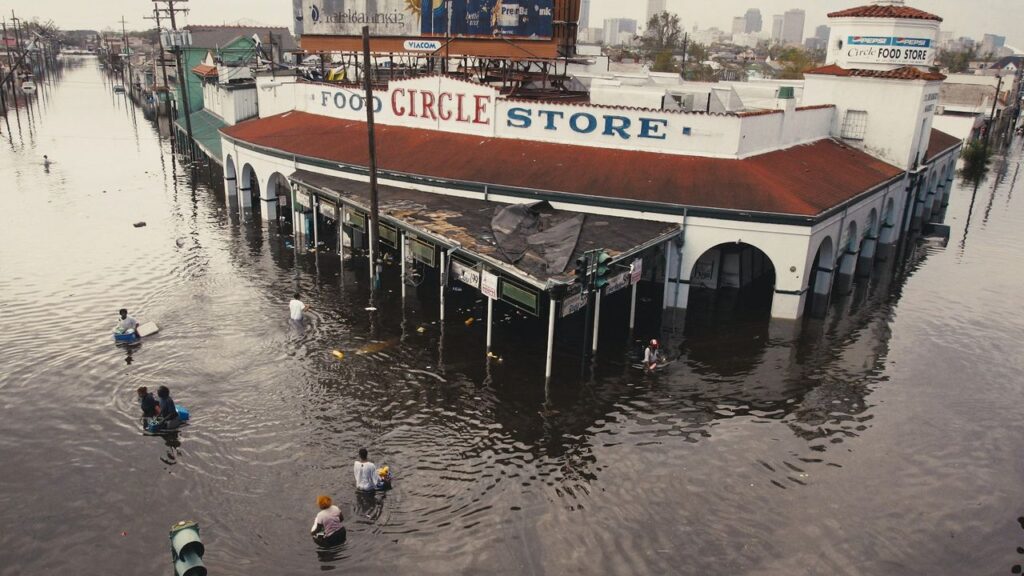Hurricane season is a time of great uncertainty for those who live in coastal areas. Hurricanes can cause significant damage to our homes, businesses and communities, and can be particularly devastating if we do not take steps to protect our homes. That is why it is essential to be prepared and proactive when protecting our homes against hurricanes. In this blog, we are going to explore the importance of protecting your home against hurricanes and present the 4 signs you should watch out for. These signs will help you identify potential risks and allow you to take preventive measures to protect your home and family. From the history of hurricanes in your area to the lack of adequate protective measures in your home, these signs will help you be better prepared when a hurricane hits. So, if you live in a coastal area, read on to learn more about how to protect your home and minimize risks in the event of a hurricane.

Sign 1: History of hurricanes in your area
The first sign to consider when hurricane-proofing your home is the history of hurricanes in your area. To research hurricane history in your area, you can search for information online or talk to local residents. Hurricane history is an important indicator of the risk you face in your area, as it gives you an idea of the frequency and intensity of hurricanes that have affected your area in the past. If your area has been affected by hurricanes in the past, it is likely that you will face similar events in the future. Some areas at high risk for hurricanes include the Gulf Coast of Mexico, the East Coast of the United States, and the Caribbean Islands. By knowing the history of hurricanes in your area, you can take steps to protect your home and be better prepared in the event of a future hurricane.
Signal 2: Changes in weather patterns
The second sign to keep in mind when protecting your home against hurricanes is changes in weather patterns. It is important to stay aware of changes in weather patterns to identify potential risks in your area. You can stay on top of climate changes by reading weather reports and monitoring weather alerts. Changes in weather patterns are an important indicator of hurricane risk in your area, as they can affect the intensity and frequency of hurricanes. Some examples of recent climate changes include an increase in ocean water temperature, which can increase the intensity of hurricanes, and a rise in sea level, which can cause severe coastal flooding. These climate changes can have a significant impact on coastal areas and therefore it is important to be aware of climate changes and take preventive measures to protect your home.
Sign 3: Damage to nearby homes during previous hurricanes
The third sign to look for when protecting your home against hurricanes is damage to nearby homes during previous hurricanes. To investigate damage to nearby homes during previous hurricanes, you can talk to neighbors or search for information online. Damage to nearby homes is an important indicator of the risk you face in your area, as it gives you an idea of how hurricanes have affected homes in your area in the past. If nearby homes have suffered significant damage during previous hurricanes, your home is likely to be at similar risk in the future. Some examples of common damage during hurricanes include flooding, roof damage, and broken windows. By knowing the damage that has occurred to nearby homes in the past, you can take preventive measures to protect your home and minimize the risk in the event of a hurricane in the future.
Sign 4: Lack of protective measures in your home
The fourth sign to look out for when protecting your home against hurricanes is the lack of protective measures in your home. To evaluate whether your home has adequate protection measures, it is important to review important aspects, such as the roof, windows and doors. If your home does not have adequate protective measures, it is an important indicator of the risk you face in the event of a hurricane. Some examples of recommended protective measures for homes in hurricane zones include installing window guards, upgrading the roof, and fortifying doors. These measures can help prevent serious damage to your home in the event of a hurricane and are therefore important to consider if you live in a hurricane zone. By evaluating whether your home has adequate protective measures and taking preventive measures to protect your home, you can minimize the risk of serious damage during a hurricane.
Conclusion
In conclusion, protecting your home against hurricanes is essential to guarantee the safety of your home and your family. Throughout this article we have discussed four important signs to look for when hurricane-proofing your home, including the history of hurricanes in your area, changes in weather patterns, damage to nearby homes during previous hurricanes, and the lack of of protective measures in your home. If you spot any of these signs in your area, it is important to take preventive measures to protect your home and minimize the risk of serious damage during a hurricane. Some final recommendations for protecting your home include installing appropriate protective measures, developing an emergency plan for your family, and preparing an emergency supply kit. These measures can help ensure the safety of you and your family in the event of a hurricane. With the right information and preventative measures, you can be prepared and protect your home against hurricanes.
